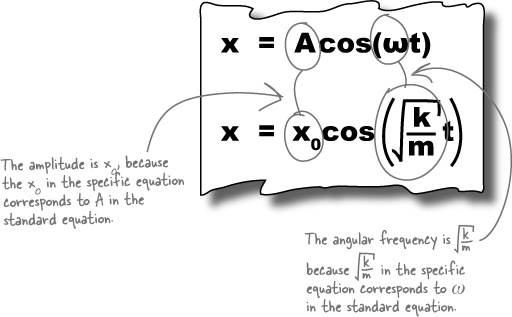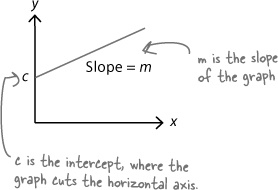Appendix A. Leftovers: The top 6 things (that we didn’t cover before, but are covering now)

No book can ever tell you everything about everything. We’ve covered a lot of ground, and given you some great thinking skills and physics knowledge that will help you in the future, whether you’re taking an exam or are just curious about how the world works. We had to make some really tough choices about what to include and what to leave out. Here are some topics that we didn’t look at as we went along, but are still important and useful.
#1 Equation of a straight line graph, y = mx + c
In Chapter 20, you learned to compare the equation for a specific case of simple harmonic motion (for example, a mass on a spring or a simple pendulum) with a standard equation for simple harmonic motion, x = Acos(ωt).
When you line up your SHM equation with this standard equation, you can use it to work out the amplitude and angular frequency of your system.

There’s an even more fundamental equation you can do this with - the standard equation for a straight line. This is given by y = mx + c, which you can plot on a graph of y vs x.

When x = 0, the equation y = mx + c becomes y = 0 + c, which is just y = c.
Therefore, ...
Get Head First Physics now with the O’Reilly learning platform.
O’Reilly members experience books, live events, courses curated by job role, and more from O’Reilly and nearly 200 top publishers.

